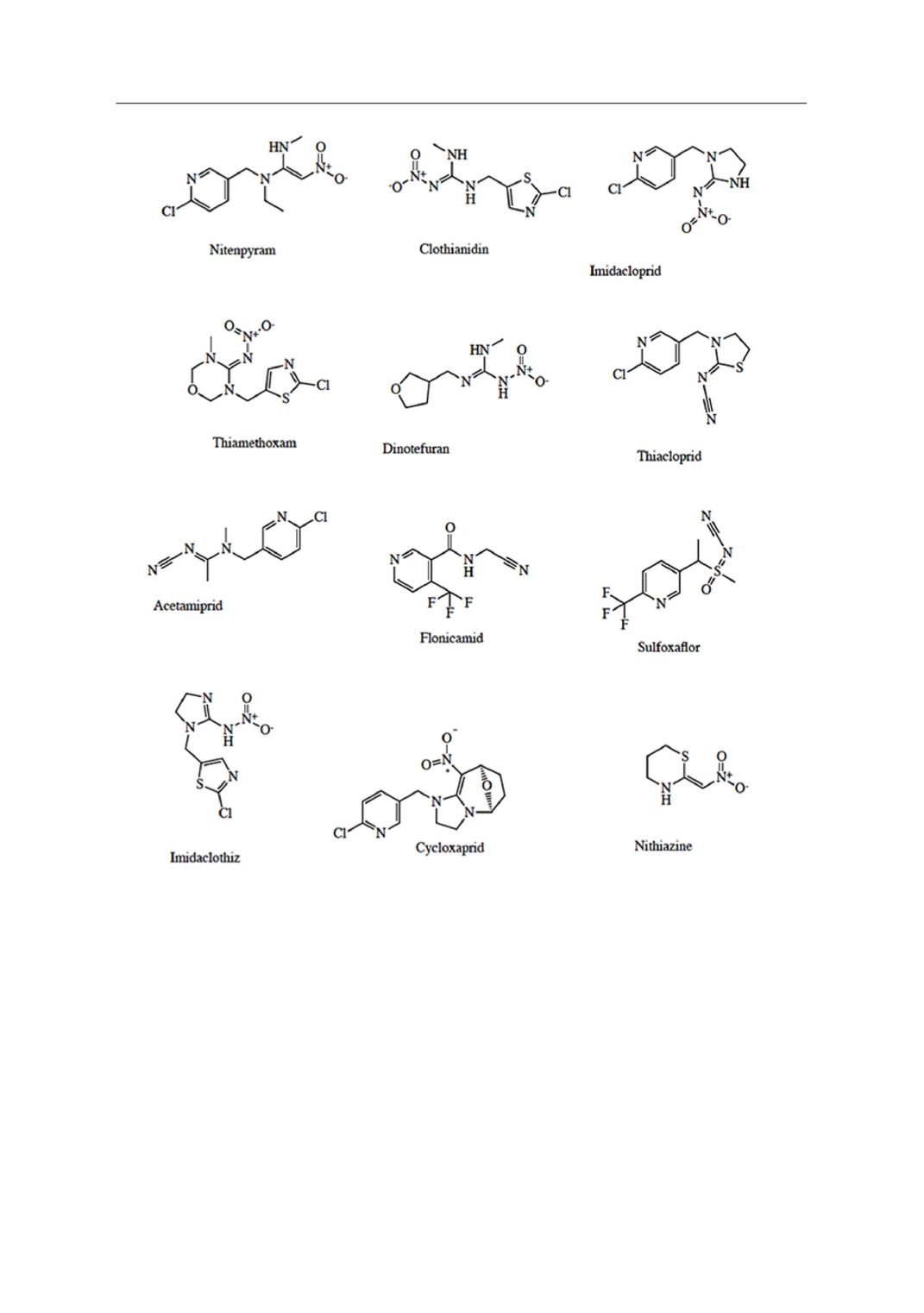
© Benaki Phytopathological Institute
Kasiotis & Machera
34
stems from parasites, pesticides and the
poor flower diversity seems to be related to
bee declines (Goulson
et al.,
2015). Indica-
tive symptoms provoked by sublethal doses
of IMI in honeybees are the decrease in the
hypopharyngeal gland size, and respirato-
ry rhythm (Hatjina
et al
., 2013). Nonetheless,
impairment of memory and brain metabo-
lism has also been reported (Decourtye
et
al
., 2003). In this context, NNDs’ presence in
human organisms is overshadowed by their
impact especially on bees, and the relative-
ly moderate to low toxicity that they exhib-
it with respect to other more hazardous for
human health pesticides, such as organo-
phosphates, carbamates and pyrethroids
(Dawson
et al
., 2010).
Humans are exposed to numerous pol-
lutants
via
their diet (Domingo
et al
., 2008; Lu
et al
., 2008; Marti-Cid
et al
., 2008b, a, c), the
drinking water (Benotti
et al
., 2009), and the
pollution of several environmental compart-
Figure 1.
Chemical structures of Neonicotinoids


